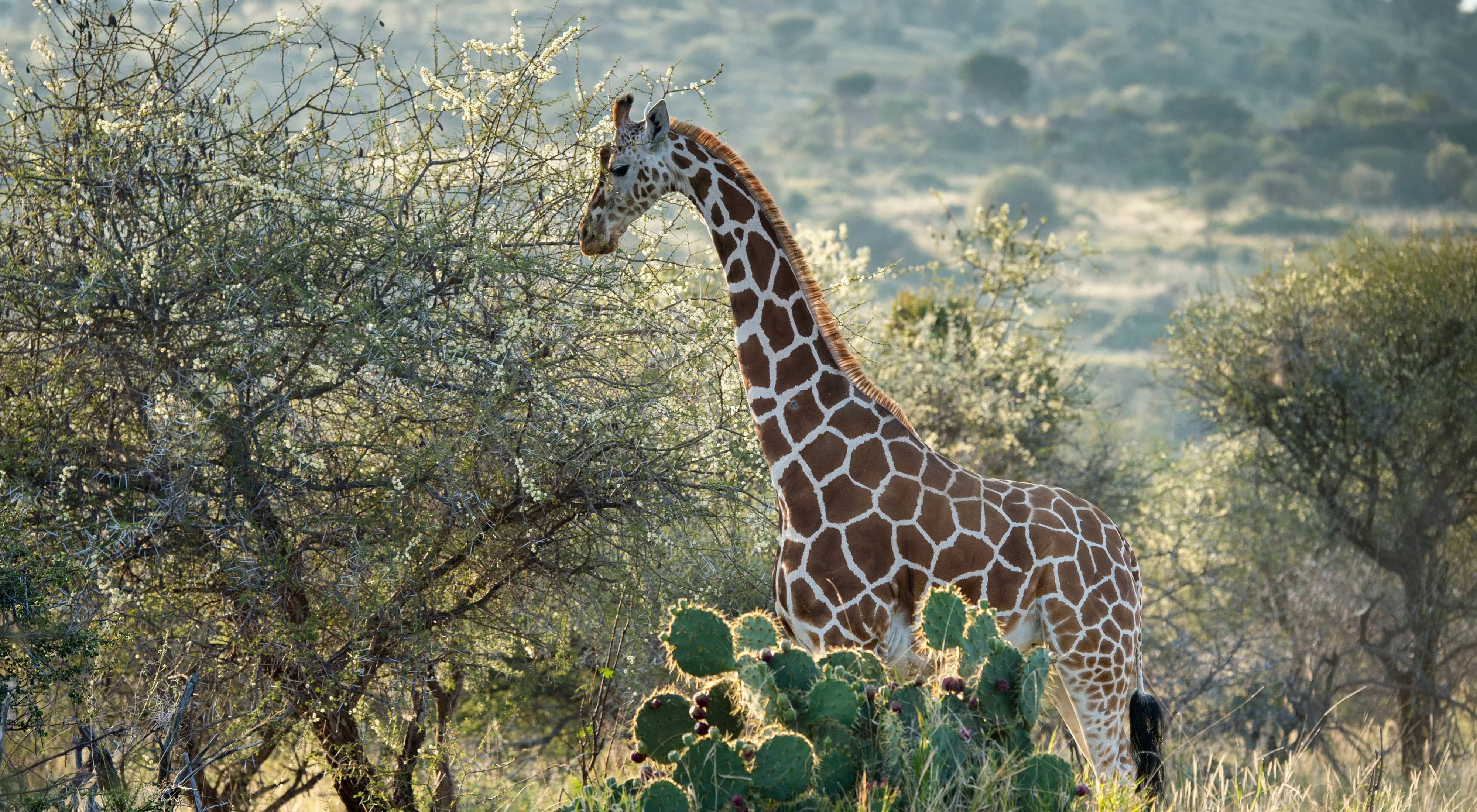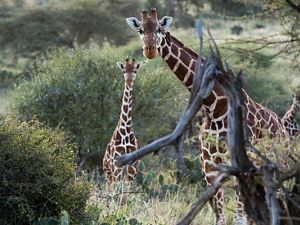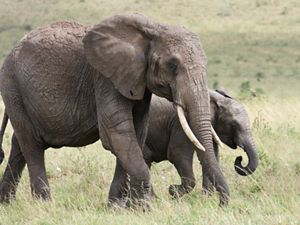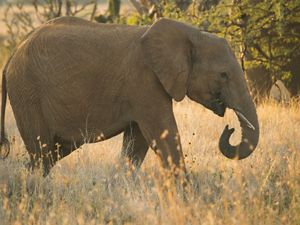Meet the Giraffe
The world’s tallest land mammal, the giraffe lives in southern Africa and is one of the world’s most recognizable animals. They are known for their long necks, sloping backs, and short horns. There are four species of giraffe, but the Conservancy works largely with the reticulated giraffe. Reticulated giraffes can live up to 30 years and grow as tall as 19 feet.
Their long necks give them a strategic advantage: they don’t have to compete with other species for the leaves of tall trees. However, their necks also cause some interesting challenges, like being at risk to predators while bending down to drink water.
Giraffes give birth standing up, and the calves learn to walk and run within hours of being born. Despite being such resilient young animals, reticulated giraffes are enduring potentially devastating population losses.








Protecting the Giraffe
Since the 1990s, reticulated giraffe populations have decreased by 70 percent. Once almost taken for granted as an abundant animal, now giraffes may be slipping away without public notice.
In December 2016, the International Union for Conservation of Nature (IUCN) moved giraffes two categories down the IUCN Red List of Threatened Species from "Least Concern" to "Vulnerable."
To address this, scientists are researching giraffes on two large areas of protected land, Loisaba Conservancy, which The Nature Conservancy helped protect and establish for the Loisaba Community Trust, and Namunyak Community Conservancy, one of 27 conservancies supported by TNC partner Northern Rangelands Trust.
In 2017, the partners also affixed solar-powered satellite GPS tracking devices to 11 giraffes to understand their movements. Unfortunately, two of those animals were poached, but the remaining giraffes’ movements will provide valuable data that will help TNC and others develop informed conservation strategies.



